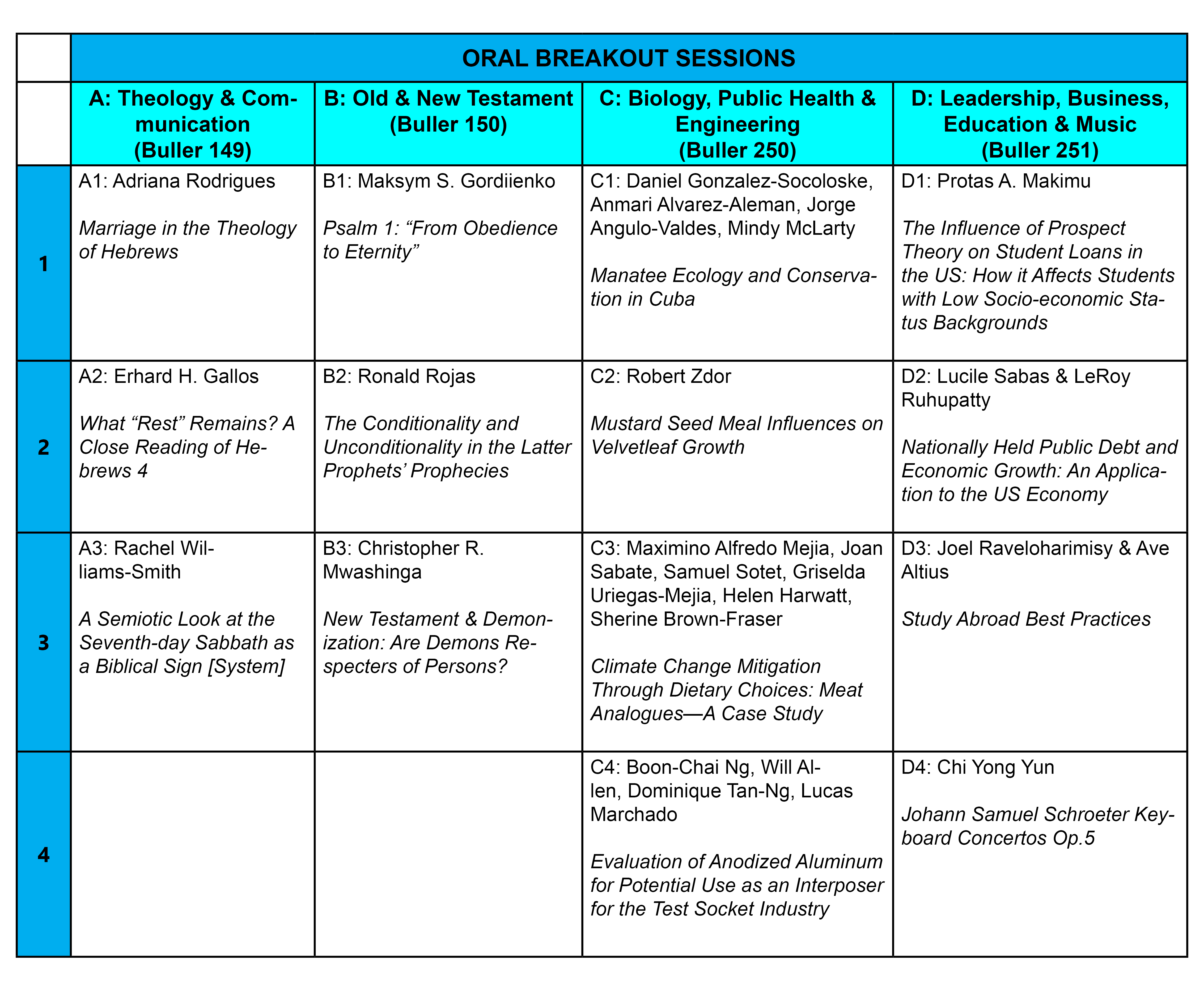
Oral Breakout Sessions
Presentation Title
A-3 A Semiotic Look at the Seventh-day Sabbath as a Biblical Sign [System]
Presenter Status
Chair, Department of Communication
Preferred Session
Oral Session
Start Date
30-10-2015 3:30 PM
End Date
30-10-2015 3:45 PM
Presentation Abstract
Using semiotics as a lens through which to view the Biblical Seventh-day Sabbath, this paper explores how the Sabbath fulfills the denotation and connotative definition of a sign, is a combination of both a signifier and the signified, and functions as a part of a comprehensive sign system. The Sabbath qualifies by semiotic definition as a sign because Scriptures clarify that the Sabbath was intended to stand for (or signify) something else. The paper argues that seventh-day Sabbath is a sign by which God communicates His creative and redemptive authority to mankind. Furthermore, in the case of the Bible Sabbath, the signifier is a twenty-four hour, regularly occurring period of time, specified as a particular day, the seventh day of the week. Finally, because the Sabbath sign is rooted in a system that predates sin, it naturally preserves a wealth of spiritual truths as inevitable and eternal rather than the superficiality of myths that Barthes targeted in his studies. It concludes that though Barthes may have never looked beyond earthly signs, he presents a theory through which we can examine a sign which God created using time itself and find meanings that otherwise might remain hidden.
A-3 A Semiotic Look at the Seventh-day Sabbath as a Biblical Sign [System]
Using semiotics as a lens through which to view the Biblical Seventh-day Sabbath, this paper explores how the Sabbath fulfills the denotation and connotative definition of a sign, is a combination of both a signifier and the signified, and functions as a part of a comprehensive sign system. The Sabbath qualifies by semiotic definition as a sign because Scriptures clarify that the Sabbath was intended to stand for (or signify) something else. The paper argues that seventh-day Sabbath is a sign by which God communicates His creative and redemptive authority to mankind. Furthermore, in the case of the Bible Sabbath, the signifier is a twenty-four hour, regularly occurring period of time, specified as a particular day, the seventh day of the week. Finally, because the Sabbath sign is rooted in a system that predates sin, it naturally preserves a wealth of spiritual truths as inevitable and eternal rather than the superficiality of myths that Barthes targeted in his studies. It concludes that though Barthes may have never looked beyond earthly signs, he presents a theory through which we can examine a sign which God created using time itself and find meanings that otherwise might remain hidden.


